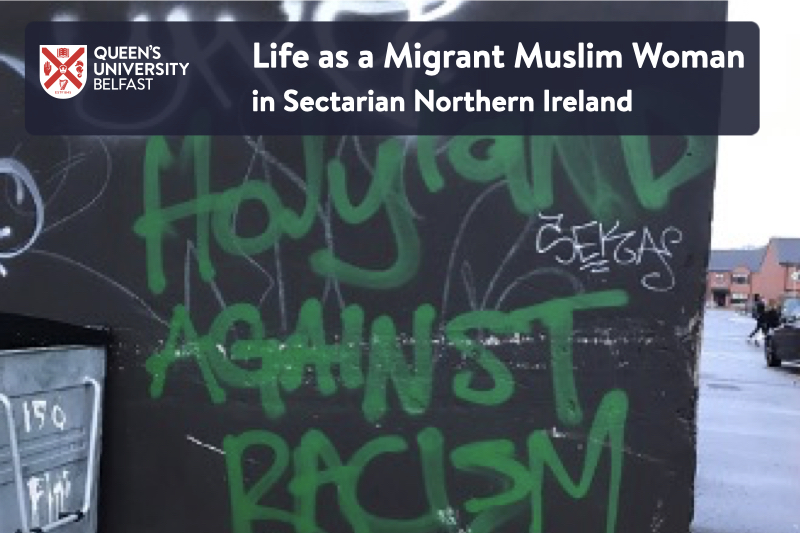Life as a Migrant Muslim Woman in Sectarian Northern Ireland
Dr Amanda Lubit reflects on the release of her recent book

This book (free to all) developed out of 18 months of in-depth research with Muslim women living in Belfast. The goal of this research was to better understand their experiences with finding a home and a sense of belonging when settling in Northern Ireland. I also sought to share women’s personal stories so as to demonstrate how much diversity there is in the Muslim community. Individuals come from a wide variety of backgrounds, identifying with many countries, languages and cultural traditions. While each woman’s story is unique and personal, they also share similarities.
In addition to being an ethnography of migrant Muslim women, this book is also an ethnography of modern Belfast. It looks at how the region’s history has shaped the ways migrant and minority populations experience daily life.
In particular, it looks at the problems of sexism, Islamophobia, racism and hate crime, demonstrating the real consequences of these forces on women’s lives. Under these circumstances, many of the women I engaged with have found it difficult to connect with people and places around them. Despite these difficulties, these relationships are a priority and women use many strategies to make meaningful connections. The book considers the relationships Muslim women develop, the places they spend time, and the activities in which they engage. These actions are intentional, used by women to create a feeling of belonging in their adopted home of Belfast.
Different chapters consider different aspects of Muslim women’s lives. I begin with discussions about the invisibility of Muslim women’s spaces and the visibility of Muslim women who wear the hijab (chapters three and four). Visibility has an effect upon how freely women are able to move around the city and their sense of safety. I then consider how sectarianism has shaped local institutions like housing and policing, making many neighborhoods unsafe for outsiders like Muslim women and their families (chapters five through seven). I also look at the complexity and individuality of women’s social relation with locals and with other migrants. I do so by examining several women-only spaces in great detail, to consider how women make a place for themselves in shared spaces (chapters eight through ten). Then I explore the particular experiences of asylum seekers and refugees who struggle with restrictions placed on them by the state, yet find ways to build meaningful relationships and spaces (chapters eleven and twelve). Finally, I present details on how some Muslim women were impacted by and responded to the difficulties that accompanied the initial months of the COVID-19 lockdown (chapters thirteen and twelve).
This book is related to the study undertaken as part of my Doctor of Philosophy at The School Of History, Anthropology, Philosophy and Politics at Queen’s University, under the supervision of Dr Evropi Chatzipanagiotidou and Dr Fiona Murphy. I am currently a Marie-Sklodowska-Curie (MSCA) Post-Doctoral Fellow with Dublin City University and the Max Planck Institute for the Study of Religious and Ethnic Diversity. I continue to research women in Belfast who are seeking refuge and asylum.
Lubit, A. (2024). Life as a Migrant Muslim Woman in Sectarian Northern Ireland: An Exploration of Gender, Visibility, Movement and Placemaking. Berghahn. To access the book for free, please follow this link: https://www.berghahnbooks.com/title/LubitLife